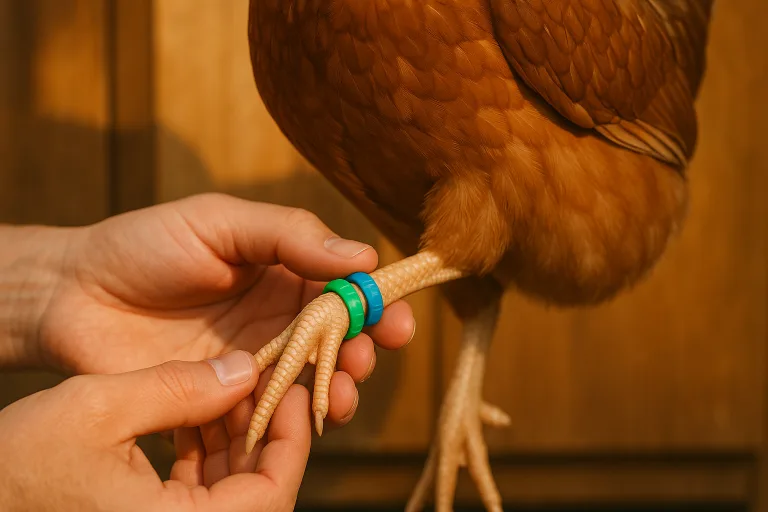Winter Egg Production: Unlocking Consistent Layers' Potential
Poultry farmers face the challenge of maintaining consistent egg production in their layer flocks in winter. The colder temperatures, shorter days, and unpredictable weather patterns can have a significant impact on the productivity of hens.
To tackle this issue, adjustments need to be made in areas such as nutrition, lighting, temperature control, ventilation, and stress reduction. In this article, we will explore these aspects in detail, providing valuable insights and strategies to unlock the full potential of layers during the winter season.
By implementing these techniques, farmers can ensure a steady supply of eggs even in the most challenging months.
Impact of Winter Season on Egg Production
Winter egg production challenges arise due to the seasonal effects on the layer flock. Shorter days and lower temperatures during winter affect the laying patterns of hens.
Daylight plays a crucial role in stimulating egg production, and the decrease in daylight hours during winter disrupts the laying cycle. Additionally, the cold temperatures can cause stress to the birds, leading to reduced egg production.
The seasonal effects on layer flocks necessitate the implementation of strategies to mitigate the impact of winter on egg production. These strategies include optimizing nutrition, managing lighting, ensuring proper temperature control and ventilation, and implementing stress reduction measures.
Nutritional Adjustments for Winter Egg Production
To optimize egg production during the winter season, it is essential to make specific nutritional adjustments for layer flocks. Colder weather demands adjusting feed to meet the nutrient balance required for peak egg production. This ensures that layers receive the necessary nutrients even in the winter months.
Adjusting the layers’ nutrition helps maintain consistent egg production during the colder months, when lower temperatures and shorter days can impact productivity. By providing a diet that is tailored to their needs, layers can continue to lay eggs at an optimal rate.
Ensuring the right nutrient balance through adjusting feed is crucial for maintaining high egg production during the winter season.
Importance of Artificial Lighting in Winter
Artificial lighting plays a crucial role in maintaining consistent egg production during the winter season. As daylight hours decrease, the benefits of natural lighting diminish, leading to a decline in egg laying. The impact of daylight hours on layer flocks is significant, as they rely on natural light to regulate their reproductive cycles. To compensate for this, strategic utilization of artificial lighting is necessary.
By providing additional light in the coop, layers can be stimulated to continue their laying schedule. This helps maintain optimal egg production throughout the winter months. It is important to note that the intensity and duration of artificial lighting should mimic natural daylight to ensure the well-being and productivity of the flock.
Thus, effective management of artificial lighting is crucial for unlocking the full potential of consistent egg production during winter.
Strategies for Temperature Control and Ventilation
To ensure optimal conditions within the coop, the following strategies can be employed:
- Heater efficiency: Utilize heaters that are energy-efficient and capable of maintaining a consistent temperature. This helps create a comfortable environment for the layers, promoting consistent egg production.
- Ventilation systems: Implement effective ventilation systems that allow for proper air circulation while preventing drafts. This helps remove excess moisture and ammonia, ensuring a healthy and conducive environment for the layers.
- Insulation: Properly insulate the coop to minimize heat loss and maintain a stable temperature. This reduces the energy required to heat the coop, resulting in cost savings and improved efficiency.
- Temperature monitoring: Regularly monitor the temperature inside the coop to ensure it remains within the optimal range for the layers’ well-being and egg production.
Managing Stress in Winter Egg Production
Managing stress in winter egg production is crucial for maintaining optimal egg production and ensuring the well-being of the flock. Winter season can introduce unique stressors for layer flocks, which can negatively impact their productivity.
To mitigate these challenges, stress reduction techniques for winter egg production should be implemented. Managing winter stressors in layer flocks involves addressing various factors such as changes in lighting, temperature fluctuations, and limited outdoor access due to adverse weather conditions.
Techniques for stress reduction may include providing adequate lighting to maintain a consistent laying schedule, implementing measures to control temperature and ventilation effectively, and creating a less stressful environment within the coop.
Maintaining Consistent Egg Production During Winter
To ensure optimal egg production and the well-being of layer flocks during the winter season, it is imperative to implement strategies that maintain consistent egg production despite the unique stressors posed by colder temperatures and shorter daylight hours.
Here are some key strategies for layer management to maintain egg quality during winter:
- Monitoring and adjusting nutrition: Colder weather demands specific adjustments in layers’ dietary plans. Maintaining a precise balance of nutrients ensures peak egg production even in winter.
- Managing lighting: The decrease in daylight hours necessitates effective management of artificial lighting. Maintaining a consistent laying schedule through strategic utilization of artificial lighting is crucial for optimal performance.
- Temperature control and ventilation: Creating and maintaining the right temperature and ventilation conditions is pivotal. Proper strategies, such as heaters, insulation, and effective ventilation techniques, help establish an ideal environment that motivates layers to lay eggs consistently.
- Minimizing stress: Winter season can pose unique stressors for poultry. Implementing stress reduction measures, such as creating a less stressful environment and managing stress factors effectively, promotes consistent egg production.
Effective Winter Egg Production Techniques
Implementing effective techniques for winter egg production is crucial for maintaining optimal egg quality and productivity in layer flocks. Winter egg production poses unique challenges due to shorter days, lower temperatures, and unpredictable weather patterns. To overcome these challenges, farmers can employ various winter egg production strategies.
Optimizing nutrition is essential, as colder weather demands adjustments in layers’ dietary plans. Balancing nutrients ensures consistent egg production during winter.
Strategic management of lighting is necessary to maintain a consistent laying schedule despite decreased daylight hours. Artificial lighting can be strategically utilized to ensure optimal performance.
Temperature control and ventilation strategies play a vital role in creating a comfortable environment that motivates layers to lay eggs consistently.
Lastly, stress reduction measures are important to address the unique stressors that winter season can pose. Implementing these techniques will help maximize winter egg production.
Creating an Ideal Environment for Layers in Winter
Creating an optimal environment for layers during the winter season is essential for maintaining high egg production and quality. To achieve this, the following strategies can be implemented:
- Managing Cold Stress: Cold temperatures can cause stress in layers, leading to a decrease in egg production. Providing adequate insulation, heating, and protection from drafts can help minimize cold stress.
- Optimizing Feed Formulation: Adjusting the layers’ diet to meet their specific nutritional needs during winter is crucial. This includes ensuring they receive the right balance of nutrients to support egg production even in colder weather.
- Strategic Lighting: With shorter daylight hours during winter, managing artificial lighting becomes important. Maintaining a consistent laying schedule through the strategic use of lighting can help stimulate egg production.
- Temperature Control and Ventilation: Maintaining the right temperature and proper ventilation within the coop is vital. This can be achieved through the use of heaters, insulation, and effective ventilation techniques, creating a comfortable and conducive environment for consistent egg-laying.
Conclusion
In conclusion, managing winter egg production in layer flocks requires careful attention to several factors:
- Nutrition: Implementing specific dietary plans can help meet the nutritional needs of the layers during the winter season. This may include adjusting the feed composition to account for reduced forage availability and increasing the energy and protein levels in the diet.
- Lighting: Utilizing artificial lighting effectively is crucial for stimulating egg production in winter. By providing additional hours of light, farmers can mimic longer daylight periods and encourage the layers to maintain consistent egg laying.
- Temperature control: Creating and maintaining the right environmental conditions is essential for the well-being of the layers and their egg production. Proper insulation, heating systems, and monitoring equipment can help regulate the temperature inside the poultry house.
- Ventilation: Adequate ventilation is necessary to ensure a constant supply of fresh air and remove excess moisture, ammonia, and odors. Good air quality promotes the health of the layers and can enhance their egg production.
- Stress reduction: Managing stress factors, such as overcrowding, aggressive behavior, and disease control, is crucial for maintaining optimal egg production during winter. Reducing stressors can help keep the layers healthy and productive.
By implementing these strategies, poultry farmers can unlock the full potential of layers during the winter season. These measures ensure consistent egg production and contribute to the overall success of poultry farming operations.

